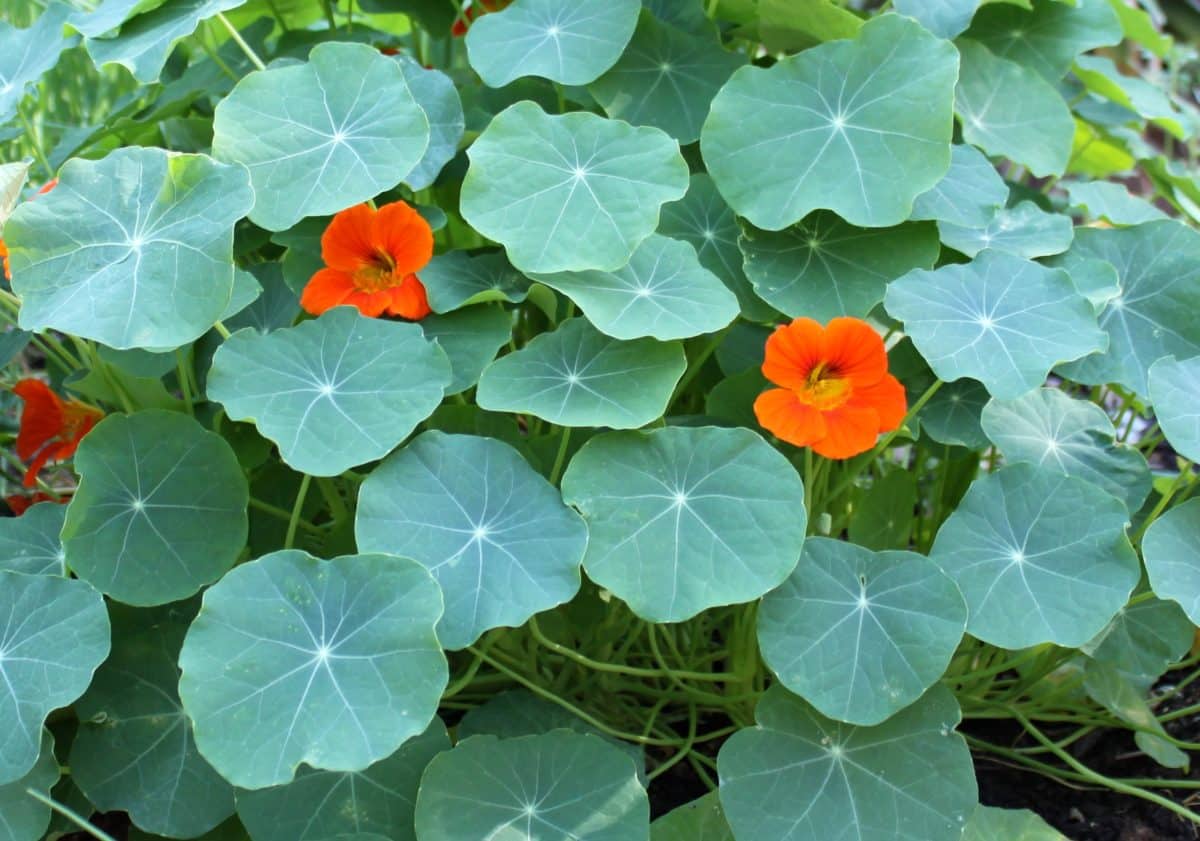
In our little part of the Zambezi Valley, a few miles upriver from Victoria Falls in Zambia, nasturtiums grow wild. That’s “wild” as in prolific, not wild as in native. And the vision of this ever-giving plant’s jeweled flowers and puddle-shaped leaves—more familiar in Monet’s Giverny than our Kalahari scrub—tucked up as happy companions among our vegetables, is a sight that is as cheerful as it is incongruous.
Nasturtiums are versatile, and here in the African bush, versatility rules. Not only an effective companion plant, nasturtiums are a flavorful and nutritious edible. Both the flowers and the leaves contain the same oils as those found in horseradish, wasabi, and mustard seeds, all of which are known for their antiviral, antibacterial, and antibiotic properties.
While our nearest grocery store is a half-hour drive away, it’s hardly a Whole Foods or Marks & Spencers. Ingredients I took for granted when I lived in the United States and Europe are seldom available. One can find almost anything in Lusaka, Zambia’s capital, a six-hour drive away, as you can in Johannesburg in South Africa, a 90-minute flight away. But here we are often lacking, making improvisation an essential ingredient for producing good food on a remote African farm. One is pushed to be creative. One is forced to make a plan.
“Let’s make a plan,” is a southern African truism I heard throughout my childhood growing up on a farm during a civil war in neighboring Zimbabwe. There were serious shortages back then, a result of economic sanctions combined with the deprivations of war. They were much worse than the shortages we experience here. Yet back then we ate well, cooking from our gardens and farms, while making up deficits from other local producers.

It’s how we mostly do it today, too, the only difference being that back in the 1970s our English influenced palates weren’t especially interested in food with foreign names or ingredients — especially if they came from anywhere near the Mediterranean. I’d never tasted an olive or an anchovy, for instance, until I enrolled in a French-inspired cookery school in England after I finished high school. As for tasting capers, they came even later. Theirs was an alien flavor which took a few tries before I developed a taste for them. Once I did I was hooked. Ever since, capers have been a staple in my pantry–until, that is, I moved to the African bush.
I was lamenting their absence to my sister-in-law, Elizabeth, who came to live in Zambia early last year, around the same time that I did. I told her how, out of desperation, I’d even tried to grow my own caper bushes but that none of the seeds had germinated. Had I tried nasturtium seedpods as a replacement? she asked. Nasturtium seedpods instead of capers? I’d never heard of them before.
When she came to visit me shortly after our conversation, Elizabeth brought with her a large bag filled with immature nasturtium seedpods collected from her own garden: young, pale green, stripy seedpods the size of small chickpeas, which she harvested soon after the dying flowers had fallen from the plant.
Armed with her basic instructions, I set about researching how to make nasturtium capers. I learned that nasturtiums are classified as a vegetable, but that Thomas Jefferson ate pickled nasturtium seedpods grown in his gardens at Monticello. From various resources I crafted a recipe using available ingredients and a method suited to the facilities in my bush kitchen: brining the seedpods in salt water for three days, draining and washing in cold water, then marinating in a vinegar mix for a further five days.
To me, pickled nasturtium seedpods—or Poor Man’s Capers, as referred to by some—proved to be a terrific substitute for regular capers. They are slightly larger and crunchier, but still piquant and peppery. I’ve eaten them as a replacement for cornichons, with cheese and cold meats. I’ve added them as a key ingredient in salsa verde and putanesca sauce. Here I share my most favorite way of using nasturtium capers: in a potato salad, inspired by a recipe in Sarah Raven’s Garden Cookbook. ![]()
